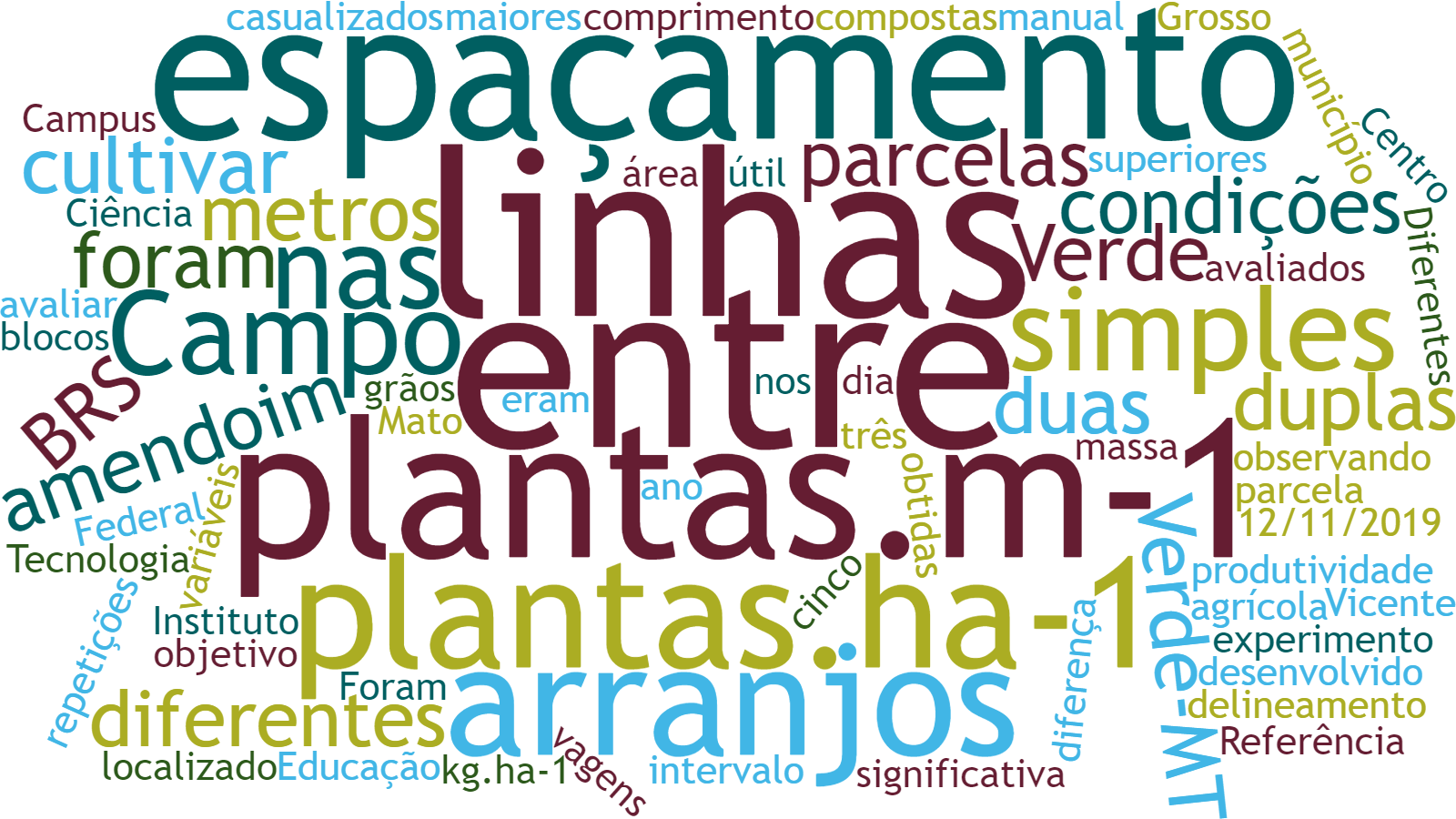Different sowing arrangements for the BRS 423 OL peanut cultivar in Campo Verde-MT conditions
DOI:
https://doi.org/10.17648/sas.v1i2.10Keywords:
Arachis hypogaea L., Improvement Program, Peanut in Mato Grosso, SpacingAbstract
The objective was to evaluate different peanut sowing arrangements with the cultivar BRS 423 OL, under the conditions of Campo Verde-MT. The experiment was carried out in the agricultural year 2019/20 with manual seeding on 12/11/2019, in the experimental area of "‹"‹the Federal Institute of Education, Science and Technology of Mato Grosso – São Vicente Campus, Campo Verde Reference Center, located in the municipality of Campo Verde – MT. The experimental design was in randomized blocks, with five replications. The treatments were different sowing arrangements: T1 – Population of 222,222 plants.ha-1 in the spacing of 0.90 m between single lines and 20 plants.m-1, T2 – Population of 222,222 plants.ha-1 in the spacing of 0.73 mx 0.17 m between double lines and 20 plants.m-1 and T3 – Population of 214,285 plants.ha-1 in the spacing of 0.70 m between single lines and 15 plants.m-1. The plots consisted of two lines three meters long, with an interval between plots of two meters and a useful plot of 5.4 m2. Mass of 100 grains and pod yield were evaluated, observing a significant difference in the two variables. The highest yields were obtained in the population arrangements 222,222 plants.ha-1 in the spacing 0.73 mx 0.17 m between double lines and 20 plants.m-1 and the population 214,285 plants.ha-1 in the spacing 0.70 m between simple lines and 15 plants.m-1, both with yields above 5,400 kg.ha-1.
Downloads

Downloads
Published
How to Cite
Issue
Section
License
Autores concordam com os seguintes termos:
a) Os autores mantêm os direitos autorais e concedem à revista o direito de primeira publicação, com o trabalho simultaneamente licenciado sob a LicençaAttribution-NonCommercial-ShareAlike 4.0 International, que permite o compartilhamento do trabalho com reconhecimento da autoria e publicação inicial na Revista SAS. A licença permite o uso, a distribuição e a reprodução irrestrita, em qualquer meio, desde que devidamente citada a fonte. Essa licença permite também que outros remixem, adaptem e criem a partir do seu trabalho para fins não comerciais, desde que atribuam a você o devido crédito e que licenciem as novas criações sob termos idênticos.
b) Não cabe aos autores compensação financeira a qualquer título, por artigos ou resenhas publicados na South American Sciences.
c) Os conceitos expressos nos artigos publicados na South American Sciences são de inteira responsabilidade de seus autores.








